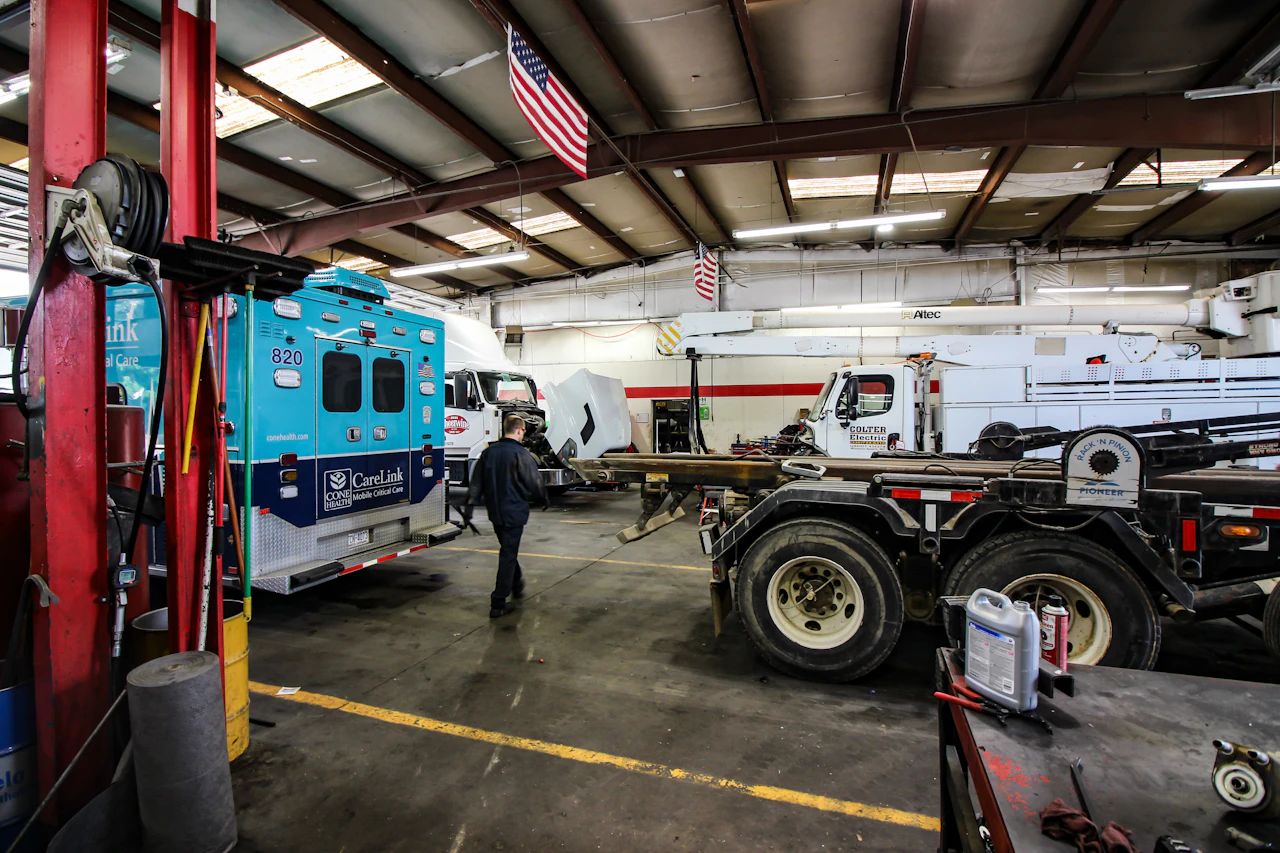How to Reduce Fleet Downtime With Routine Preventive Maintenance Service
Downtime kills profits—plain and simple. Whether you’re managing ten trucks or a hundred, every minute one sits idle is a minute it’s not generating revenue. Missed deliveries, frustrated drivers, and rising costs can all snowball from what started as a "minor issue."
But here's the fix. Routine preventive maintenance. By building a systemized approach to inspections and servicing, fleet managers in North Carolina can drastically cut unexpected repairs and keep their trucks running strong mile after mile.
What is Preventive Maintenance for Fleets?
Preventive maintenance (PM) is exactly what it sounds like—servicing your vehicles before something breaks. Instead of reacting to failures, you’re proactively inspecting and maintaining critical components based on mileage, engine hours, or time intervals. This not only extends the life of your assets but also ensures you stay compliant with DOT regulations—no surprises during roadside inspections.
A strong PM program should include:
- Engine oil and filter changes
- Transmission and coolant fluid inspections
- Air and fuel filter replacements
- Brake, tire, and suspension checks
- Electrical and lighting system reviews
- Aftertreatment system inspections
Why Unscheduled Downtime Costs More Than You Think
Think the occasional breakdown isn’t a big deal? Think again. The real cost of downtime often includes lost business opportunities and reduced client trust—intangibles that hit the bottom line just as hard.
One Class 8 truck experiencing a breakdown can result in:
- $500–$1,000 in towing costs
- Lost revenue from delayed deliveries
- Overtime wages for stranded drivers
- Penalties from missed contracts or SLA violations
- Ripple effects across your entire dispatch schedule
Key Benefits of Preventive Maintenance for Fleet Efficiency
Keeping your trucks in top shape isn’t just about preventing failures but maximizing performance and uptime. Routine service is the secret weapon of smart fleet operators who want to stay profitable and ahead of the curve. Here’s how routine PM gives your fleet a competitive edge:
- Improves safety by ensuring brakes, steering, and lights are functioning properly
- Extends asset life, helping trucks reach higher mileage before major overhauls
- Reduces repair costs by catching minor issues before they become major ones
- Keeps warranty coverage intact with service history documentation
- Streamlines recordkeeping for DOT audits and CSA score improvements
How to Build a Bulletproof PM Schedule
Not all preventive maintenance programs are created equal. The best ones are tailored to your specific vehicle types, routes, and load conditions. Consistency is key. Missing even one service interval can allow wear to accelerate, especially in systems like brakes and cooling.
Here’s how to build one that actually works:
- Set service intervals based on OEM recommendations and operating conditions
- Include seasonal checks—coolant for summer, batteries for winter
- Create inspection checklists for drivers to use during pre-trip and post-trip inspections
- Use fleet management software to automate reminders and log service history
- Align PM tasks with DOT compliance requirements
Common Failures Prevented by Routine Maintenance
Preventive maintenance catches these issues early—before your driver ends up on the shoulder waiting for a tow. Want to know what PM is actually saving you from? Here are some common failures that preventive service can eliminate:
- Brake system failure due to worn pads or slack adjusters
- Tire blowouts from low pressure or uneven wear
- Overheating caused by coolant loss or a faulty fan clutch
- Low oil pressure from dirty filters or degraded oil
- DPF clogging due to ignored regen cycles or poor fuel quality
Slow or Stop Replacements and Repairs
Preventive maintenance plays a critical role in reducing the need for major engine repairs such as overhauls, in-frame rebuilds, or complete replacements. By consistently servicing components, through oil and filter changes, fluid checks, and system inspections, operators can catch wear and tear before it escalates into catastrophic failures.
This proactive approach keeps key parts like pistons, bearings, and cylinder liners within their service limits, extending their lifespan and delaying or even preventing large-scale repairs. When preventive maintenance is ignored, small problems compound and eventually force costly downtime for extensive repairs or replacements.
In short, preventive maintenance is not just routine upkeep—it is a strategic investment that minimizes the likelihood of disruptive, high-cost engine rebuilds or replacements.
Routine Maintenance Is a No-Brainer for Fleet Managers
Here’s the bottom line: routine preventive maintenance isn’t a cost—it’s an investment that pays for itself. With National Fleet Management, your preventive maintenance will improving fuel efficiency and safety by dodging catastrophic failures. PM keeps your trucks rolling and your customers happy.
Don’t wait for problems to arise. Get ahead of them. For fleet maintenance services in North Carolina, contact National Fleet Management. We’ll help you develop a custom PM strategy that reduces downtime and keeps your fleet earning, not idling. To learn more about, reach out or read our article on signs your fleet needs maintenance.

